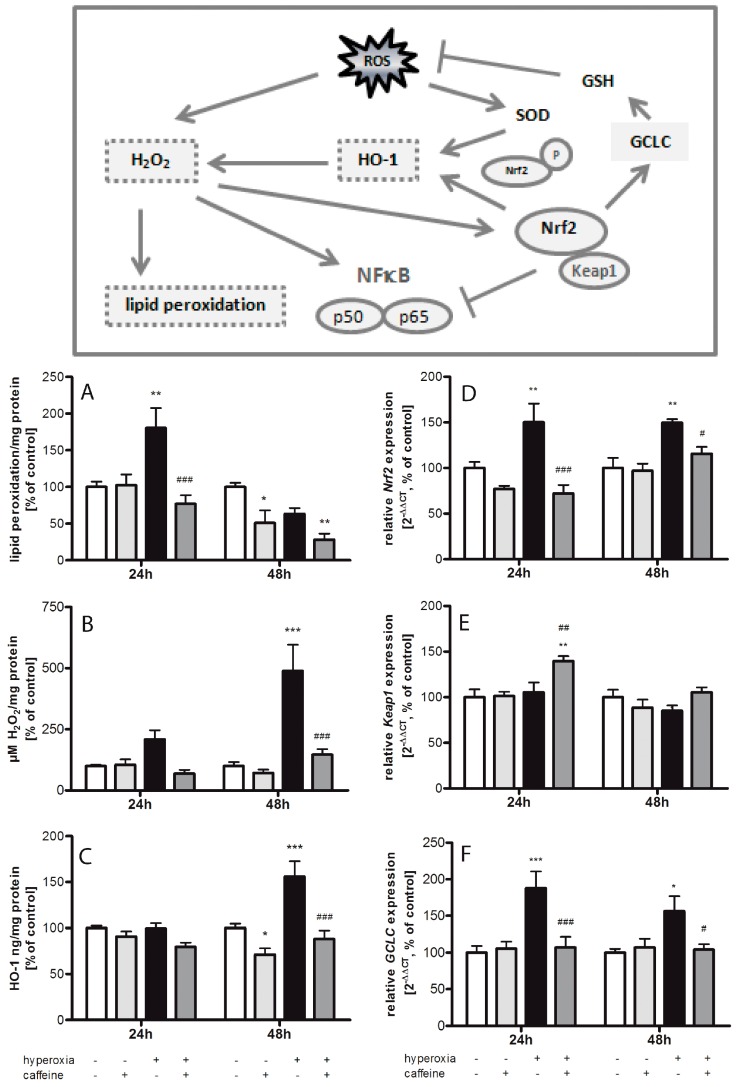Figure 1.
Caffeine reduces oxidative stress responses during exposure to hyperoxia. (Box) Reactive oxygen species imply hydrogen peroxide, which promotes lipid peroxidation. The antioxidant enzyme response is induced, which leads inter alia to an activation of heme oxigenase-1 (HO-1). The Nrf2-Keap1 system plays alongside the NFκB pathway an essential role in the implementation of the antioxidant gene regulation in response to oxidative stress. The catalytic subunit of glutamate-cysteine ligase (GCLC) is upregulated by Nrf2. Quantitation of brain homogenates by ELISA of: (A) TBARS/lipid peroxidation; (B) H2O2; and (C) HO-1; and mRNA expression by quantitative real-time PCR of: (D) Nrf2; (E) Keap1; and (F) GCLC. Groups are shown as normoxia (white bars), hyperoxia (black bars), with and without caffeine (dark grey and light grey bars, respectively) as mean ± SEM, n = 4–5 per group per time point. The 100% value is: (A) 1.268 and 1.959 µM/mg protein; (B) 0.887 and 2.946 µM/mg protein; (C) 3.604 and 2.891 ng/mg protein; (D) 1.008 and 1.029 CT; (E) 1.014 and 1.029 CT; and (F) 1.016 and 1.015 CT for 24 and 48 h groups, respectively. Data were analyzed by two-way ANOVA with Bonferroni post hoc test, with * p < 0.05, ** p < 0.01, and *** p < 0.001 versus control (atmospheric air), and # p < 0.05, ## p < 0.01, and ### p < 0.001 versus hyperoxia (80% oxygen without caffeine).

